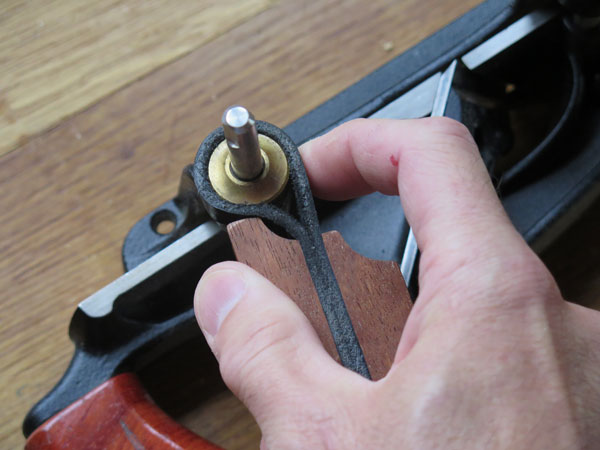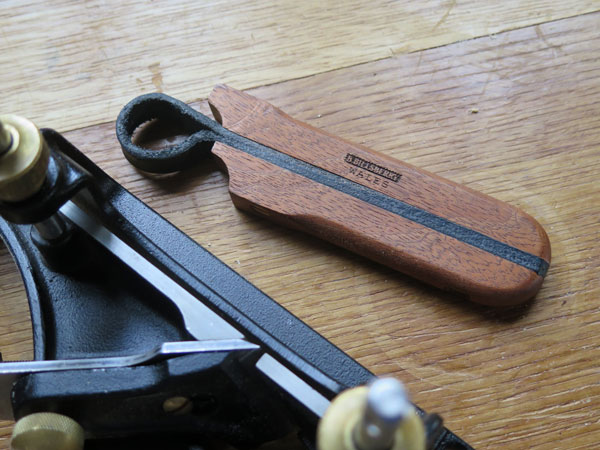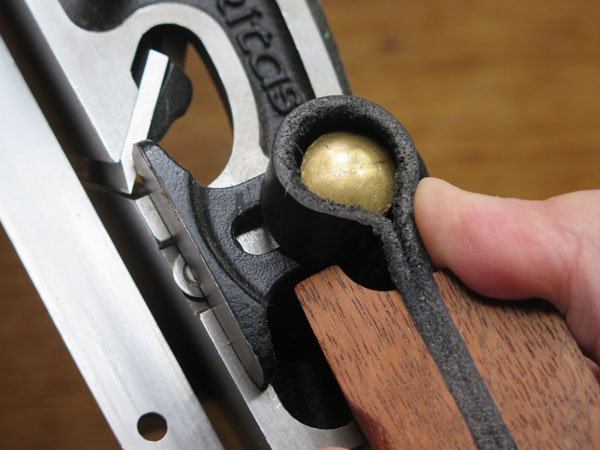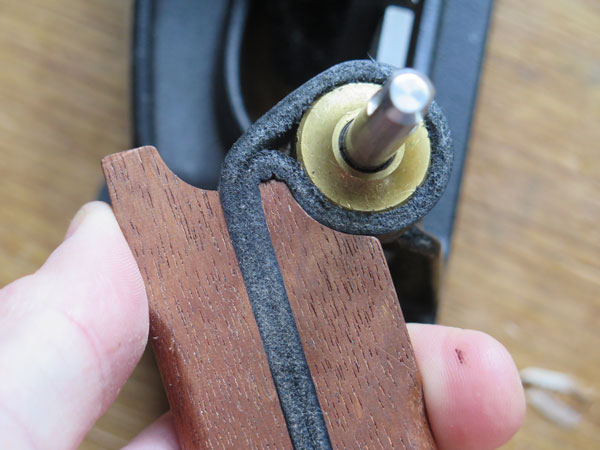We may receive a commission when you use our affiliate links. However, this does not impact our recommendations.
A couple years ago I revealed my secret shame: I use pliers to tighten the round collets on the fences and depth stops of my Veritas planes. Read that post here.
I was admonished by the “lovers of round brass things” but then eventually was released on my own recognizance.
Recently, a professional woodworker in Wales devised a simple leather and wood strap wrench that tightens these brassy bits without marring them. During a recent trip to England I acquired one of these wrenches from the maker, Bern Billsberry, and my brass bits will forever be swaddled in black leather.
The aptly named Nutsaver is a tool that you can choose to buy or make. Bern has put up instructions for making your own here on his Instagram feed. Anyone can make one with basic leather and woodworking skills. In the U.K. you can buy one from Bern by dropping him a line through his Instagram account. In the United States, Sterling Toolworks carries the tool.
It works simply through friction and leverage. You put the leather lasso on the nut and twist clockwise to tighten. The nut will move only a tiny bit – and that’s all it takes. At that point you will be unable to loosen the nut by hand.
A group of my students took a Veritas skew rabbet plane for a two-day joyride this month and the fence didn’t slip once. Oh, and the tool also works on depth stops.
To loosen the nuts, turn the tool over and repeat the process, this time twisting it counterclockwise.
In all, the device works remarkably well. Want to read more double-entendres about metallic nuts and their eventual salvation? Check out this entry by luthier Kieran Binnie at OverTheWireless.
— Christopher Schwarz
Here are some supplies and tools we find essential in our everyday work around the shop. We may receive a commission from sales referred by our links; however, we have carefully selected these products for their usefulness and quality.













I cringed when you mentioned pliers on brass nuts. Though we always carried pliers around the farm, dad would give us a serious chewing out for using them on a nut or bolt instead of a wrench.
I put the nuts in a vise, filed a flat on one side, then flipped the nut in the vise so the flat was down (used a 4″ square) and filed a flat on the opposite side, checking a few times to make sure I was parallel to the first flat. I filed the fence nuts to 3/4″ or 19mm and the depth stop nut to 9/16″ or 14mm. I have wrenches hanging over a metal workbench near my woodworking bench. I only use two fingers near the head of the wrench to snug the nuts just a little. Works great, and my nuts aren’t all chewed up.
It’s obviously based on an automotive oil filter removal tool or a plumbers non-marring strap wrench. Pretty sweet. I’ll have to reproduce that one as I too use pliers on my brass nuts. The practice is one way to cozy up to your maker seeking mercy against slippage and ruined knurling, “Our heavenly father forgive me for I know not what I do. Bless me this day with loose nuts and knurls kept pure.”
I did stop myself one day from doing it to a neglected Norris adjuster. Whew! That was a close one.
I recall seeing Bern’s work for the first time via a UK woodworking forum a couple of years ago. It was easy to see how talented he was and his ability in multiple areas or the craft was inspiring. His recent tool chest made with David Barron looks great too. Excellent stuff Bern!
Nice tool and generous of Mr. Billsberry to post instructions, but I’m a bit puzzled about the usage. From your pictures, it looks like you’re levering against the longer of the 2 wooden handle pieces for tightening and the shorter for loosening. The text indicates reversing the tool, which would be contradictory. Is this a matter of going it both ways, or am I more confused than usual?
In an ideal world, these nuts would have flats on them, so a normal wrench would work.